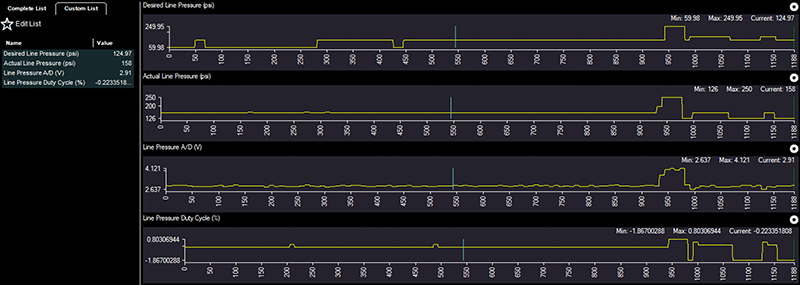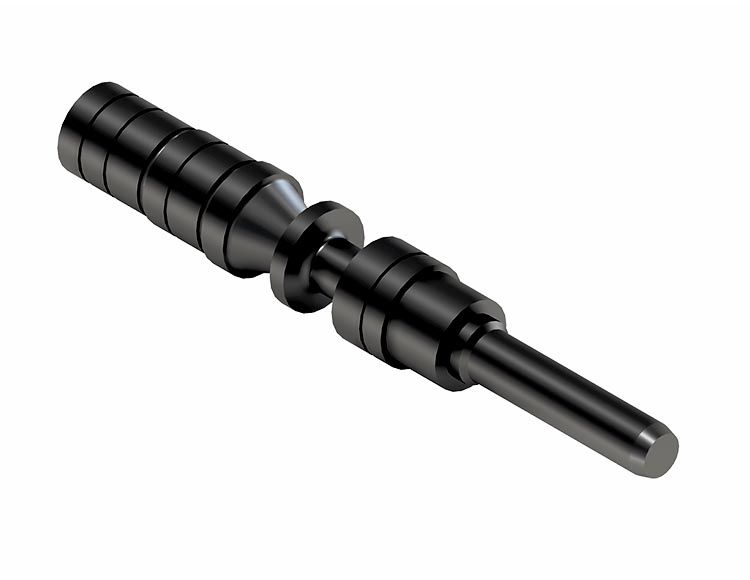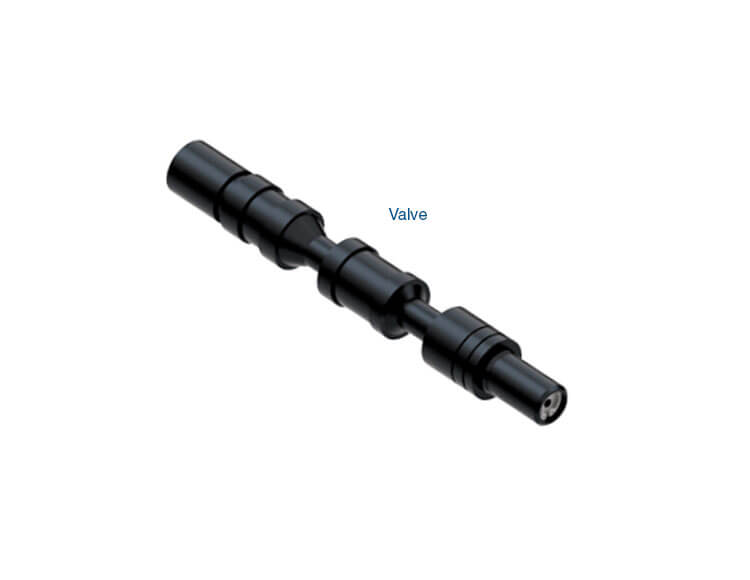Diagnosing Chrysler Transmission Max Line Pressure & P0933, P0869, P1745 Codes
Jim Mobley
This article applies to Chrysler RFE, RLE and TES transmissions that utilize pressure control solenoids (PCS) for line pressure control. The subject is a rather common electrical fault that may occur on the PCS line pressure solenoid circuit, which results in max line pressure. Diagnosis and correction of a max line pressure condition may become extremely frustrating both in time and dollars spent — going down the rabbit hole, as we call it. Surprisingly, there is no Chrysler code for a circuit fault with PCS line pressure solenoids. The vehicle may contain codes P0933, P0869 or P1745. Let’s examine code descriptions.
P0933 – Line Pressure Sensor Performance
If the actual line pressure reading is more than 172.4 kPa (25 psi) higher than the desired line pressure, but is less than the highest line pressure ever used in the current gear, P0933 sets.
Careful: With a max line condition, this code may incorrectly send you to the line pressure sensor.
P0869 – High Line Pressure
If the actual line pressure is consistently higher than the highest desired line pressure ever used in the current gear, high line pressure P0869 will set. P0869 does mention a possible open circuit fault for PCS line pressure solenoid.
Careful: Historically, this code on 62TE is often a bad powertrain control module (PCM).
P1745 – Line Pressure Too High for Too Long
This code is for 42RLE and 62TE only and typically requires the "Clear Variable Line Pressure (VLP) Counters” procedure to be performed with a scanner under miscellaneous functions.
Diagnosis
To the point, if you are working on a vehicle that is experiencing actual line pressure (psi) max pressure of 150–160 psi at idle in Park, Neutral and Drive ranges and 250 psi in Reverse, this may be an indication of an open circuit for PCS line pressure solenoid. First, examine scanner data and verify the condition. Figure 1 is an example of an open circuit via scanner info. Notice in the data that line pressure duty cycle is 38.38%, line pressure is 160 psi and the desired line pressure (psi) is default (125 psi) with no activity. If your scanner supports it, try bidirectional control of PCS solenoid and line pressure.
| Figure 1 – Open Circuit |
|---|
 |
Normal OE pressure is 60 psi minimum and 150–160 psi maximum at stall (unit dependable).
Circuit Analysis
Figure 2 is of 2013 Dodge RAM 6.7 L diesel with 68RFE transmission. This era of vehicle is very prone to have the condition of an open circuit and max line pressure. Pay attention, as this condition may be intermittent or all the time.
| Figure 2 – PCM Ground Control Circuit |
|---|
 |
Important: Your system may be different. Secure a wiring program for you VIN.
To test this circuit, use your choice of electronic test instrument with a low-current clamp on the PCS ground control wire #12 to PCM C1 terminal pin 29. Open wiring conduit and locate the correct wire. Clear codes and monitor the circuit KOER in Park or Drive range; Current flow varies from 0.20 to 1.00 amps. When current flow is observed, that is verification it is not an open circuit. This circuit with a short to ground will also have current flow, but that is the opposite: a low-pressure condition. The amp test above is a noninvasive diagnostic tool useful when using scope for an intermittent condition.
Tech Tips
- If other solenoids are functional and if code P0882 is not present (low voltage supply), the power supply side of the circuit is usually not at fault.
- Your PCS line pressure control may look different. 42RLE, 40TES and 41TES transmissions have the solenoid separate from solenoid pack.
- At times, max line pressure may be mistaken for aftermarket tuning. The difference is that tuning may have higher max pressure than 160 psi and it will not be flatline, no activity like a circuit issue.
- For 62TE, the open circuit is commonly the PCM internally.
- Line pressure duty cycle is not available on all scanners for 62TE, 40TES, 41TES and 42RLE.
Summary
I leave you today with a quote from Mr. Robert Kenny Jr., an automotive instructor at Hudson Valley Community College: “The cost for a lack of education far exceeds the cost of an education.”
Jim Mobley is a Sonnax technical communication specialist. He is a member of the Sonnax TASC Force (Technical Automotive Specialties Committee), a group of recognized industry technical specialists, transmission rebuilders and Sonnax Transmission Company technicians.
Related Units
Related Parts
Required
Recommended
68RFE
Center Pump Gear 72530B-02
-
Helps cure:
- Pump gear wear or fracture
- Scored surface where center gear pump pilot passes through pump body
- Noise concerns
Required
Recommended
Required
Recommended
Required
Recommended
45RFE • 545RFE • 65RFE • 66RFE • 68RFE
Oversized Lube Regulated Pressure Regulator Valve Kit 44912-15K
-
Helps cure:
- Low cooler flow at idle
- Restricted converter/lube flow
- Engine stall at idle
- Overheated fluid
- Poor line pressure control
- Harsh shifts
- Soft shifts
- Burnt clutches
- Converter drain back
- Lube failures
Required
Recommended
While Sonnax makes every effort to ensure the accuracy of technical articles at time of publication, we assume no liability for inaccuracies or for information which may become outdated or obsolete over time.





